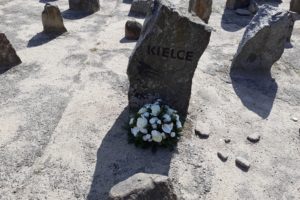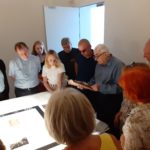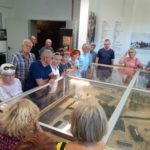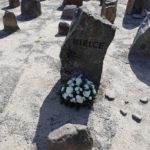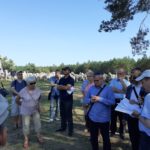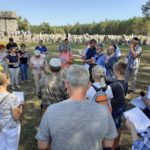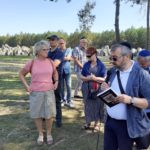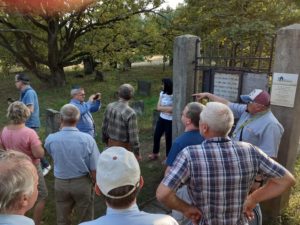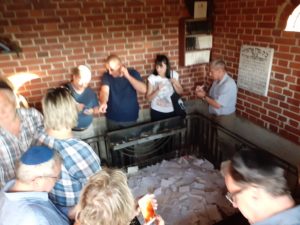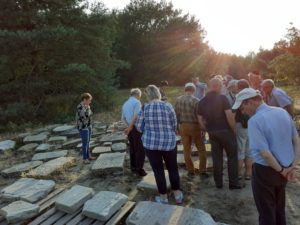On Sunday, August 25, a special event organized by the Jan Karski Society, Pilgrimage of Remembrance, took place for the third time. In order to celebrate the 77th anniversary of the destruction of the Kielce ghetto, Kielce inhabitants took up a journey to a memorial place, namely the death camp in Treblinka, where from August 19 to August 24 1942 more than 21 thousand Jewish residents of our city were deported and murdered by Germans. This year, the pilgrimage consisted of three parts. At first, we visited a permanent exhibition at the Jewish Historical Institute in Warsaw entitled “What we have been unable to shout out to the world” and dedicated to the Underground Archive of the Warsaw Ghetto and its creators – the Oneg Shabbat group. As a result of the group’s actions, led by a historian, Emanuel Ringelblum, the memory of the life of people imprisoned in the ghetto has been preserved. The Archive was recovered after the war and currently the Jewish Historical Institute is publishing its subsequent volumes. Our guide to the exhibition was Jan Jagielski, a friend of the Jan Karski Society, who has been working at the Jewish Historical Institute since the 1980s.
Then, we headed towards our destination. Along the way, we read memories of the life in and the destruction of the Kielce ghetto. In Treblinka we visited a museum dedicated to the history of the death camp, listening to a testimony of Samuel Willenberg, one of the few Jews forced to work in the camp who survived the war and was able to talk about this death factory. Then, we reached the death camp where a short but meaningful ceremony was held. We recited psalms and read out simultaneously the names of the victims. In this way, almost 2,000 names of Kielce Jews murdered in the death camp echoed in Treblinka. “The older I get and with each new visit to Treblinka or Auschwitz-Birkenau, the more I feel there are no words which can be spoken in these places”, said Bogdan Białek, president of the Jan Karski Society during the ceremony. We then laid wreaths with an inscription “In memory of Kielce inhabitants” at the main monument and a stone commemorating the victims from Kielce.
The third part of our pilgrimage consisted of a visit to Góra Kalwaria. Mateusz Blicharz-Prajs, a member of one of the few Jewish families from Góra Kalwaria who survived the war, told us about this unique place, which had been one of the centres of the Chassidic movement before the war. He also showed us around a Jewish cemetery there, where we visited an ohel built on the graves of tsaddikim Yitzhak Meir Rothenberg Alter, called Itche Meir, and his grandson, Arie Yehuda Leib. Many participants of the pilgrimage, according to a Chasidic custom, wrote their prayers on slips of paper (kwitłech) and left them at the tsaddik grave.






